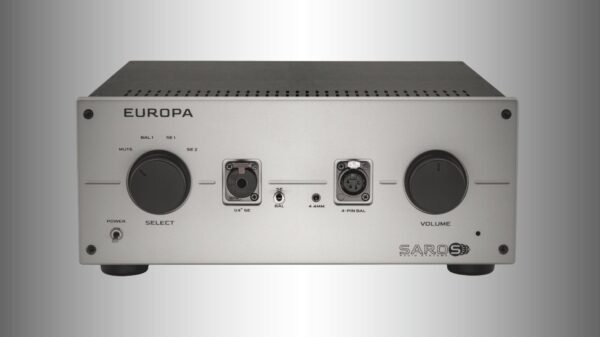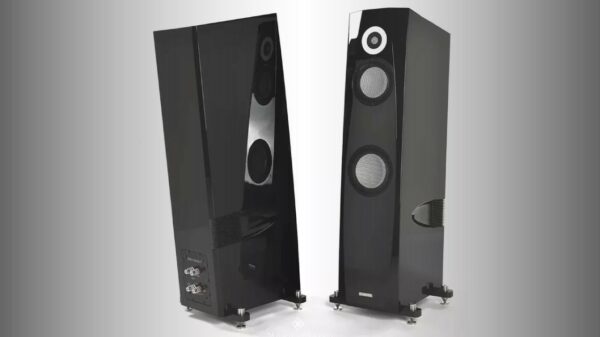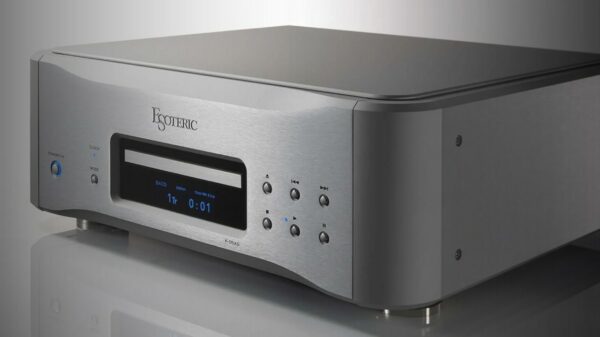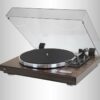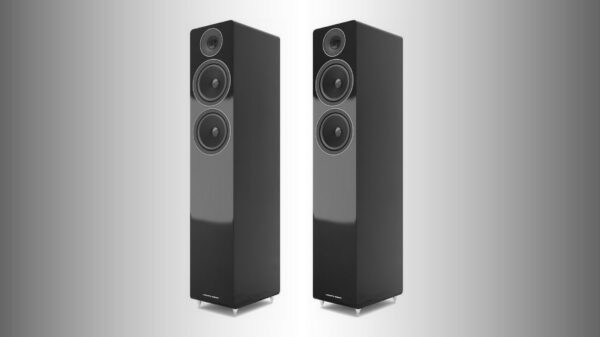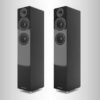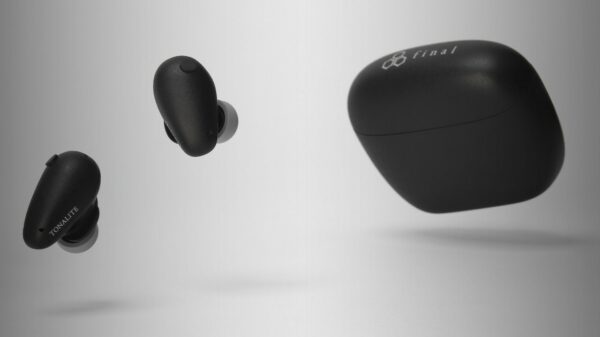Marshall speakers have long been synonymous not only with great sound, but with iconic design. Inspired by classic guitar amplifiers and mid-century tube receivers, their products bring together sonic excellence and aesthetic sophistication. Owning a Marshall isn’t just about audio — it’s about style, attitude, and taste.
Unboxing and First Impressions
The Stanmore III arrives in a sleek, premium black box emblazoned with Marshall’s signature branding — including the tattooed hand motif that fans will recognize instantly. The packaging is smart and protective: two molded cardboard inserts cradle the speaker, with additional foam wrapping for safety.
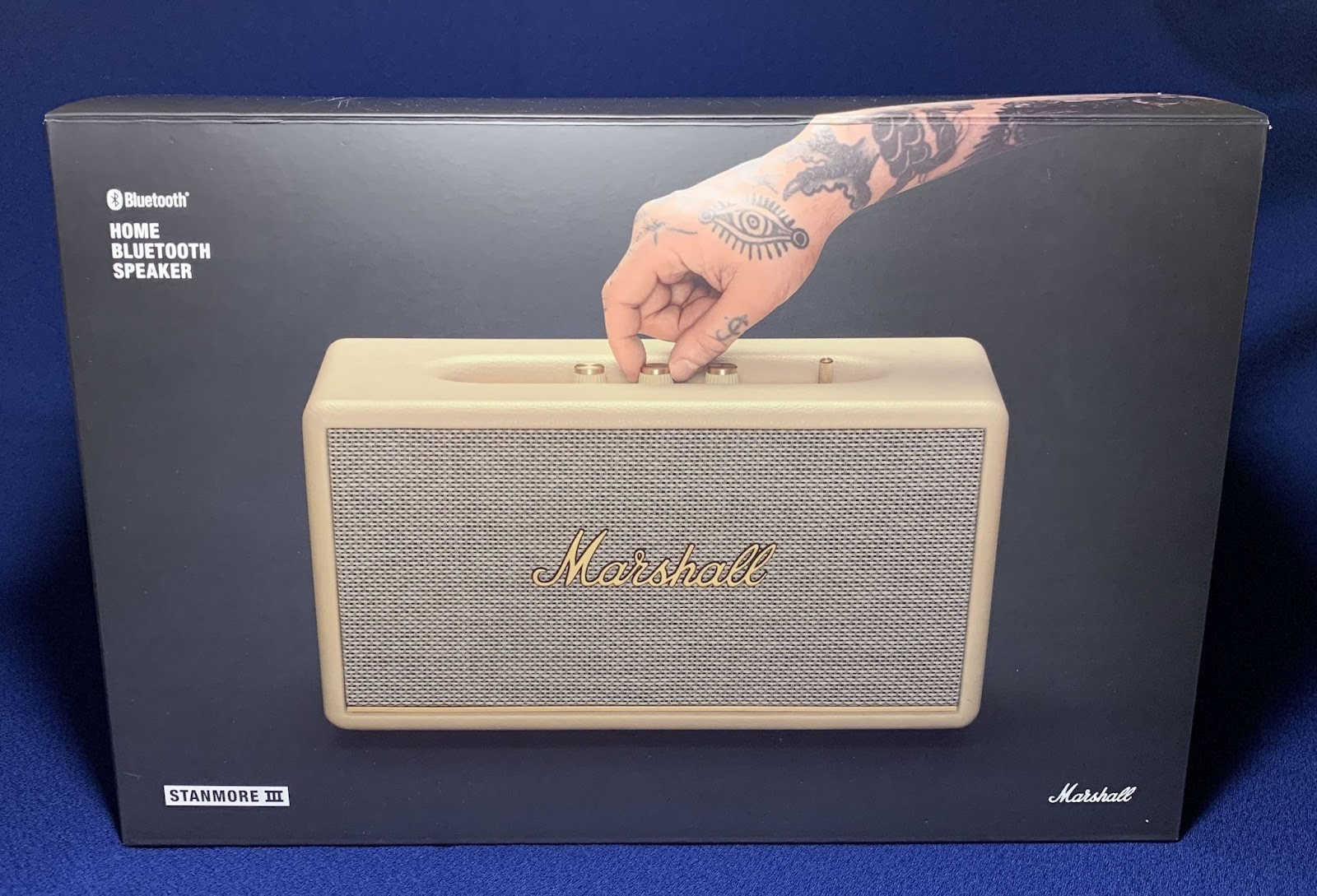
The Marshall Stanmore III speaker comes in a large, stylish black box.
Inside, you’ll find:
-
The speaker itself
-
A power cable with Euro plug
-
Documentation (manual and warranty)
Notably absent are AUX and RCA cables, which feels like a missed opportunity given the speaker’s wide connectivity options. You’ll need to supply your own cables for wired setups.
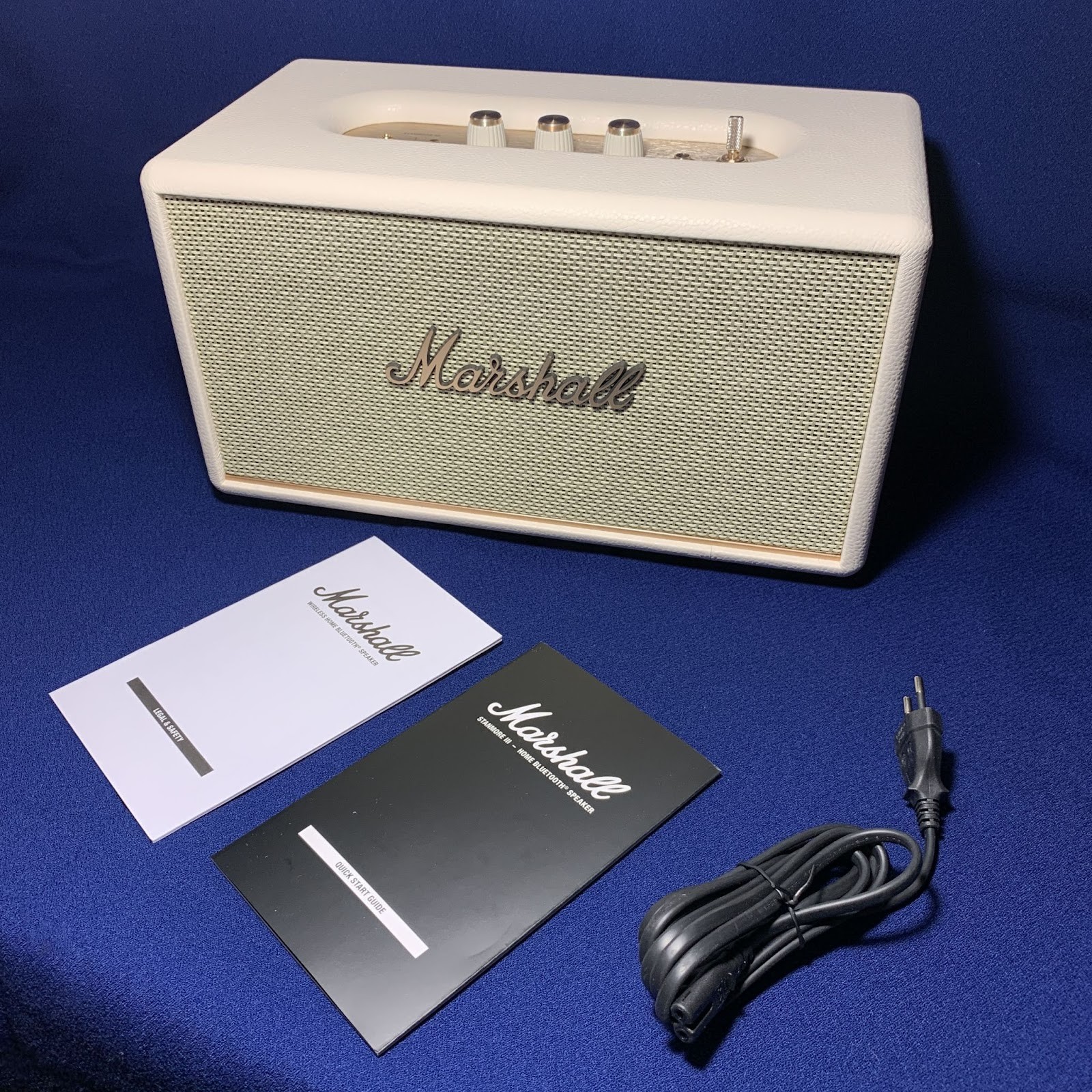
The package is quite minimalistic: RCA and AUX cables are missing, although their presence would be quite logical, given the wide functionality of the device. So you will have to either use your own wires, or buy them separately.
Technical Specifications at a Glance
-
Dimensions: 350 × 203 × 188 mm
-
Weight: 4.25 kg
-
Amplification: 1 × 50W Class D for woofer, 2 × 15W Class D for tweeters
-
Frequency response: 45 Hz – 20 kHz
-
Sensitivity: 97 dB SPL
-
Design: Bass-reflex stereo speaker
-
Connectivity:
-
Bluetooth 5.2 (SBC, LE Audio)
-
3.5 mm AUX input
-
RCA input for analog sources (e.g. turntables)
-
-
Environmental Note: 70% recycled plastic
Design & Build Quality
Vintage charm meets modern craftsmanship in the Stanmore III’s design. While the form factor nods to classic tube radios, the construction is thoroughly modern. The cabinet is made of wood to enhance acoustics, wrapped in textured vinyl that mimics leather. A brushed metal top panel and metallic-finished plastic logo add premium touches.

The design of the speaker is vintage and recognizable.
The speaker is available in black, brown, or cream — my unit came in cream, a refreshing break from the more ubiquitous black model.

Marshall Stanmore III is equipped with three speakers that provide high-quality and balanced sound:
The tactile controls on the top panel are beautifully integrated, including:
-
3.5 mm AUX input
-
Three source indicators
-
Source selection button (tap to switch, hold to pair Bluetooth)
-
Volume, bass, and treble knobs with LED indicators
-
Multi-function joystick (play/pause, skip tracks)
-
Power switch
Around the back, you’ll find the elliptical bass reflex port, RCA input, and the standard power socket.
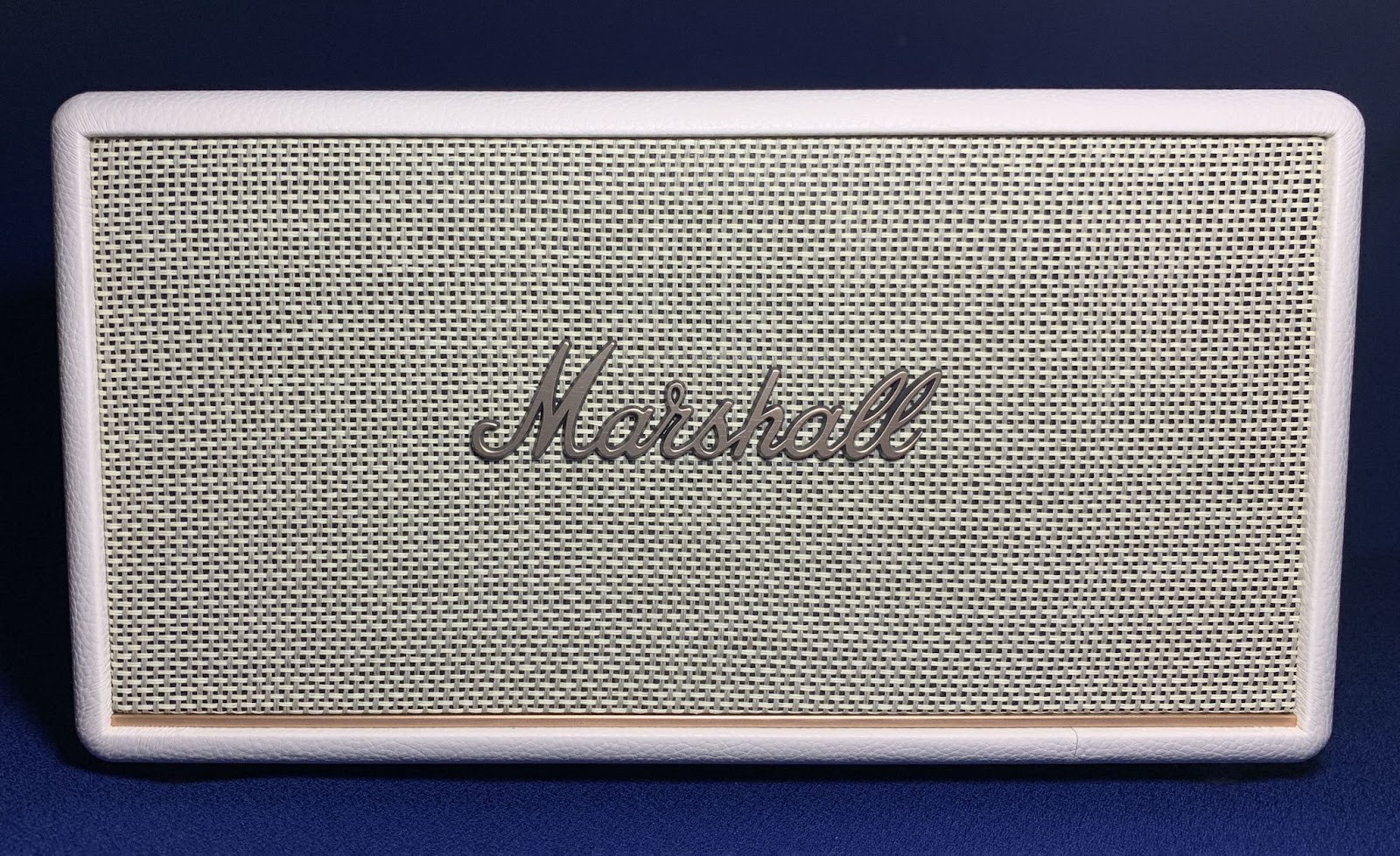
The Marshall Stanmore III combines various materials that give the speaker a premium look and durability:
App Integration & Smart Features
The Marshall Bluetooth app (iOS & Android) offers more than just remote control — it enhances functionality in meaningful ways:
-
Switch between input sources (Bluetooth, AUX, RCA)
-
Adjust volume, bass, and treble (mirrored on the physical knobs)
-
View playback info (track name, artist)
-
Optimize sound based on speaker placement:
-
Edge of a surface: boosts bass
-
Free space: maximizes natural resonance
-
Near a wall or in a corner: reduces low-end rumble
-
These adjustments, particularly the placement-based tuning, are surprisingly effective — especially considering the rear-firing bass reflex, which can create unwanted resonance near walls.
One notable omission: no support for higher-end Bluetooth codecs like aptX, AAC, or LDAC — only SBC is available, which might disappoint audiophiles.

The Marshall Bluetooth app is available in the Play Market and App Store absolutely free.
Performance & Sound Quality
Let’s talk sound — the heart of the matter.
General Character
The Stanmore III is energetic, bold, and unmistakably Marshall. It delivers room-filling sound that’s ideal for gatherings or casual listening sessions, but it leans more toward excitement than finesse.
Its sonic profile is clearly voiced with rock music in mind, especially classic rock. Think deep, punchy bass, a forward midrange, and sparkling highs that evoke the sensation of a live performance.
Testing Setup
For casual use, I paired the speaker via Bluetooth with a Samsung Galaxy S21 Ultra. For critical listening, I connected a Shanling H5 DAC via RCA, playing FLAC files through the Neutron player. The wired setup significantly improved clarity and resolution, proving the value of the analog inputs.
Frequency Breakdown
-
Bass: Tight, controlled, and punchy. You won’t get subwoofer-level depth, but what’s there is articulate and satisfying. It thrives on rock and hip-hop beats.
-
Midrange: Classic Marshall tuning — a touch of upper-mid emphasis that gives guitars and vocals a front-row presence. It’s great for rock, but less ideal for jazz or orchestral genres where balance and layering are key.
-
Treble: Brisk and energetic, with an extended range thanks to horn-loaded silk dome tweeters. There’s a slight sharpness at high volumes, but nothing harsh or fatiguing.
Genre Suitability
-
Excellent: Rock, retro rock, punk, hip-hop
-
Good: Blues, pop
-
Average: Electronic, jazz, classical
The lack of a midrange control may limit tuning flexibility for more eclectic music tastes. Hopefully, future iterations will address this.
Stanmore III vs. Acton III
Compared to the Acton III, the Stanmore III offers:
-
More volume and power
-
Deeper, more dynamic bass
-
A broader soundstage
-
RCA connectivity for analog sources
The trade-off? The Stanmore is larger and lacks portability. It’s clearly intended as a centerpiece for a living room or dedicated listening space.
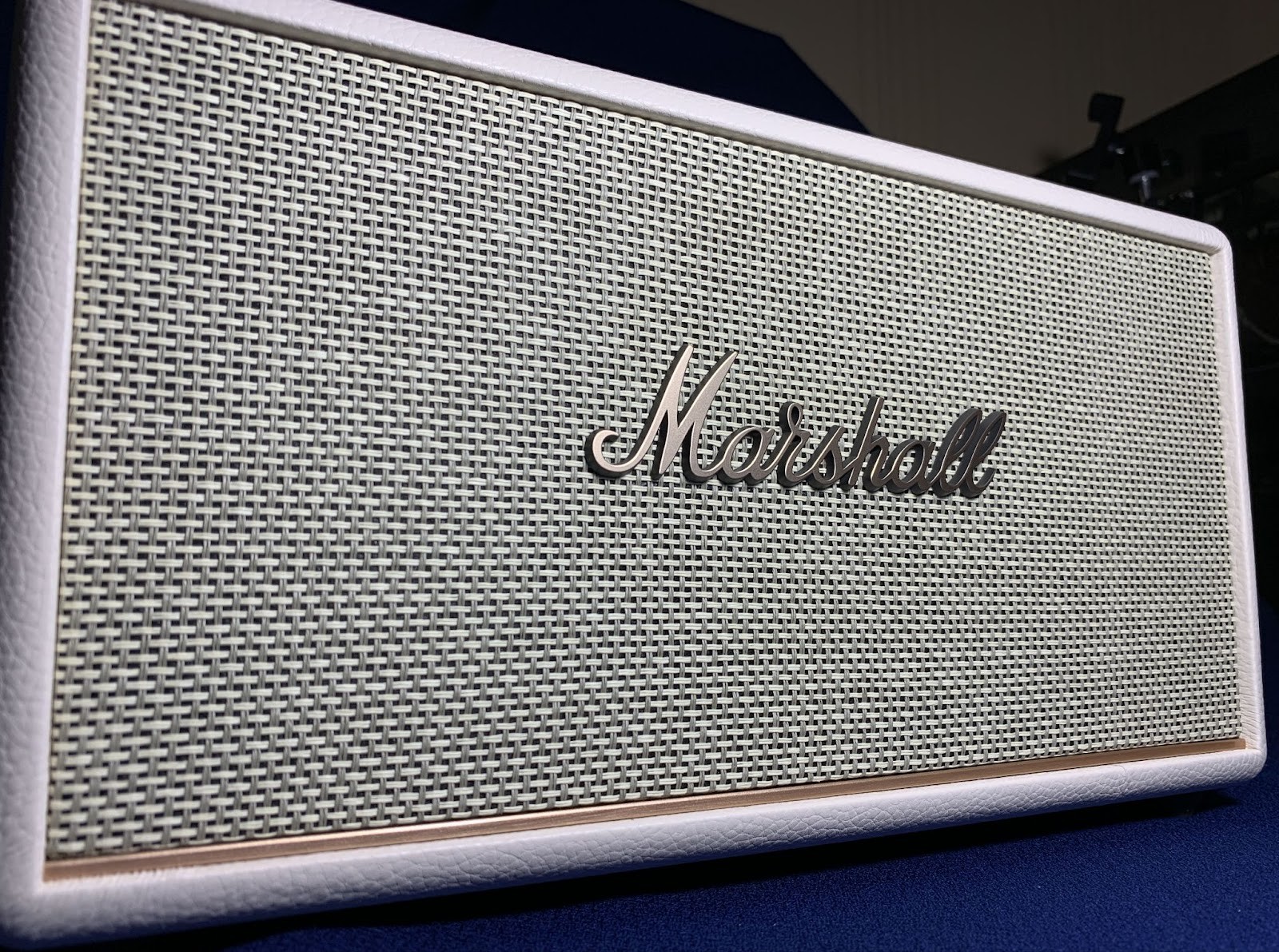
Marshall Stanmore III is a stylish and recognizable product with a powerful sound.
Final Verdict
The Marshall Stanmore III is a character-driven speaker that combines iconic aesthetics with impactful sound. It may not be the most neutral or versatile speaker on the market, but it wasn’t designed to be. It was made to rock — and it does that brilliantly.
If your musical taste leans toward guitar-driven genres, and you appreciate tactile controls and vintage design, the Stanmore III is an excellent choice. It’s not perfect — the codec limitations and minimal accessories are drawbacks — but the overall package is compelling.
Pros
- Stunning retro design with modern build quality
- Strong, energetic sound — perfect for rock and hip-hop
- App-based tuning for room acoustics
- RCA input for analog gear, including turntables
- Intuitive top-panel controls
Cons
- Only SBC Bluetooth codec (no aptX, AAC, or LDAC)
- Not sonically neutral for all genres
- RCA and AUX cables not included
- No midrange tone control
Bottom Line
The Marshall Stanmore III is for those who want their speaker to make a statement — both visually and sonically. It’s not just another wireless speaker; it’s a lifestyle piece that brings a slice of rock ‘n’ roll heritage into your home. Plug in, turn it up, and let the music do the talking.













